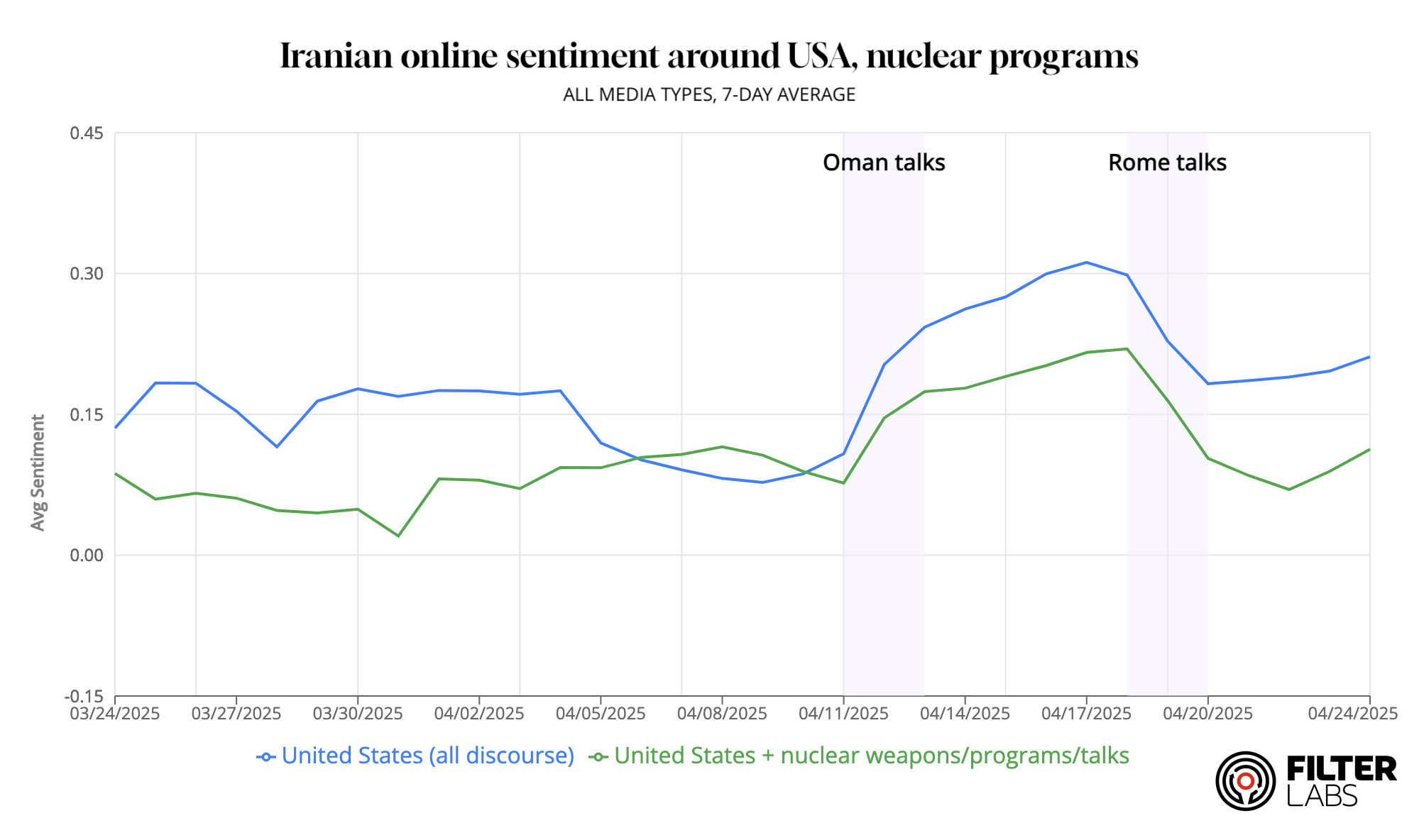Iranian Sentiment around the Nuclear Talks (and How a Rumor Distorted It)
Iranian media coverage of the U.S.–Iran nuclear talks, held earlier this month in Oman and Rome, has generally been positive. Using Talisman, our data analytics platform, FilterLabs found that average online sentiment around the U.S., in both news and social media in Iran, jumped up between April 12th and the 19th—the exact dates of the talks.
And yet, sentiment fell sharply around the time of the second round. What had changed? Using Talisman to look more closely at the underlying news and social media artifacts, we identified two culprits.
1. Some Iranian outlets covered the talks from a regional perspective. Negativity emanated from reports about Israeli opposition leader Avigdor Lieberman calling the talks a failure—not for Iran or the U.S., but for Prime Minister Benjamin Netanyahu.
2. After the second round of talks, a rumor started swirling around the Iranian media landscape: the U.S. had supposedly called for a halt to Iran’s entire nuclear program. This wasn’t true, as Iranian outlets quickly pointed out; the U.S. government had called for no such thing. But though it was untrue, the rumor gained enough traction to have a visible negative effect on overall sentiment around the U.S. for a few days after the talks. A striking—and perhaps frightening—reminder of how much a single false story can change the overall media environment.
For the record. Few to none of the artifacts we examined expressed positive opinions of the U.S. or praise of U.S. actions. There were signs of optimism about the talks, but Iranian hostility towards the United States remains (and abounds). Most of the artifacts, both pieces discussing the U.S. specifically in the context of nuclear programs and more general mentions of the U.S. that were unrelated to the nuclear issue, were quite matter-of-fact in tone, simply reporting statements or actions by U.S. officials, or comments about the U.S. by Iranian or other leaders. It is important not to misread the positive shift as a rise in pro-U.S. content in the Iranian information environment. What is noteworthy, however, is that the U.S.-related topics people are discussing and reporting on in Iran, and the information being shared about them, have on average been more positive in recent weeks.
A silver lining. Sentiment around the U.S. began to rebound once the rumor was debunked. Sometimes identifying false stories and correcting them can make a difference.
Explore the Data in Talisman
Have questions of your own? Want more hyper-local insights into hard-to-reach places (like Iran) around the world? Check out the live data on our analytics platform, Talisman! All subscribers can check out the live chart above; those with full-access subscriptions can also investigate the individual artifacts underlying them, and so much more.
If you don’t have a Talisman account yet, sign up now—a basic subscription is free!
%20-%20Tradmark.png)
